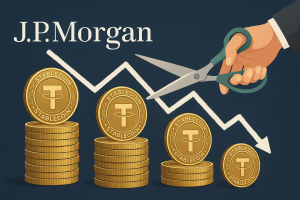Introduction
As the digital economy evolves, regulatory bodies like the U.S. Securities and Exchange Commission (SEC) are stepping up to introduce measures that promise to significantly shape the cryptocurrency landscape. With new regulations on the horizon, stakeholders across the board—from investors to enterprise blockchain innovators—are poised for changes that could redefine market dynamics and compliance standards.
Background
Cryptocurrencies have surged in popularity and value over the past few years, inviting both speculative investment and genuine interest in their potential to disrupt traditional financial systems. However, this rapid growth has also raised concerns about the need for more comprehensive regulatory frameworks to ensure market stability and protect investors from fraud and market manipulation.
The Impending SEC Regulations
The SEC’s forthcoming regulations are expected to address several critical areas within the cryptocurrency markets. Firstly, there will be an emphasis on improving transparency. By enforcing stricter disclosure requirements, the SEC aims to provide investors with better information, reducing the asymmetry that currently exists in crypto markets.
Another significant area of focus is the classification of cryptocurrencies. Determining which digital assets qualify as securities could bring many cryptocurrencies under the SEC’s jurisdiction, impacting everything from ICOs (Initial Coin Offerings) to token distributions.
Market Impact
The introduction of these regulations is likely to have mixed effects on the cryptocurrency markets. On one hand, enhanced regulatory clarity could attract more institutional investors, who have been wary of entering the market due to its previous unregulated nature. This could bring more stability and maturity to the market, potentially increasing the mainstream adoption of cryptocurrencies.
Conversely, some projects might find themselves facing heightened scrutiny and potential legal challenges, which could inhibit innovation. Startups that are unable to meet the new compliance standards might struggle to secure funding, leading to a slowdown in the launch of new projects.
Investor Protection
A cornerstone of the SEC’s regulatory approach is the protection of investors. By cracking down on fraudulent schemes and ensuring that only sufficiently vetted and compliant cryptocurrencies are traded on regulated exchanges, the SEC intends to mitigate the risks associated with crypto investments.
Investor education will also play a crucial role. The SEC has been active in providing resources and guidance to help investors make informed decisions about engaging with crypto assets.
Challenges And Controversies
The path to implementing these regulations is not without challenges. The decentralized nature of cryptocurrencies poses unique regulatory hurdles. Additionally, the global nature of the crypto market means that U.S. regulations could push some activities to other, less regulated jurisdictions, potentially creating new risks.
There has also been pushback from various stakeholders within the cryptocurrency ecosystem. Many fear that overly stringent regulations could stifle innovation and limit the transformative potential of blockchain technology.
Future Outlook
As the SEC continues to refine its regulatory framework, the key will be striking a balance between safeguarding investor interests and fostering an environment conducive to technological innovation. The outcomes of these regulations will likely set precedents for how other global regulators approach the burgeoning crypto sector.
Conclusion
The forthcoming SEC regulations represent a pivotal development in the evolution of cryptocurrency markets. While they aim to bring much-needed stability and legitimacy to this innovative space, the broader implications for market dynamics and innovation will unfold over time. Stakeholders must stay informed and agile as they navigate this new regulatory landscape, which will undoubtedly shape the future trajectory of the digital economy.



